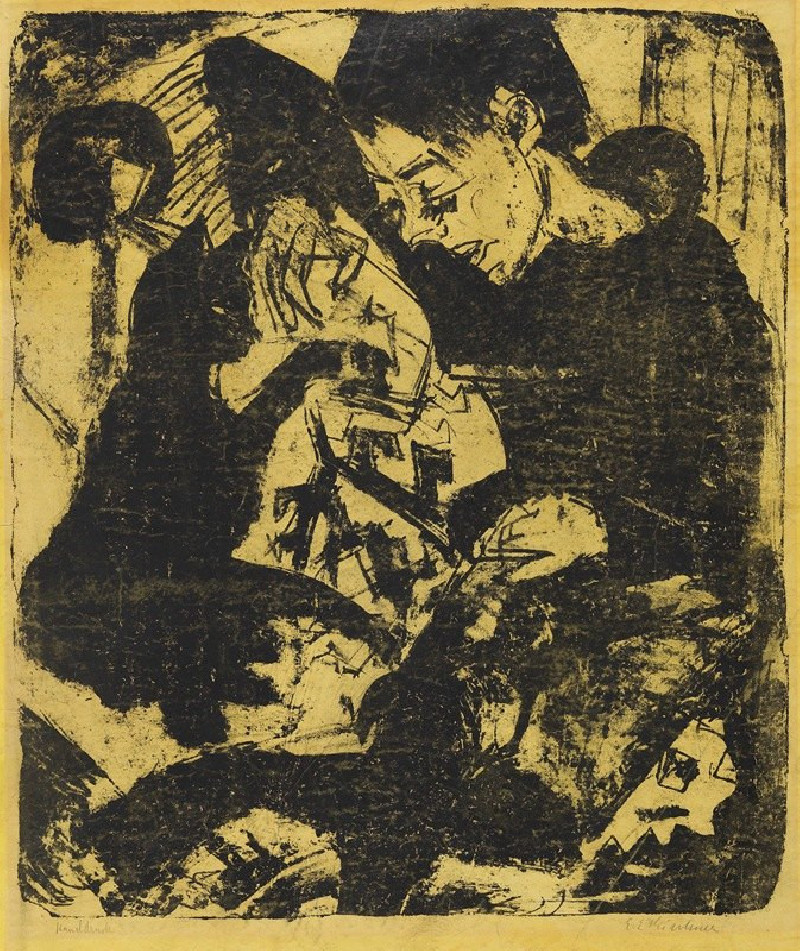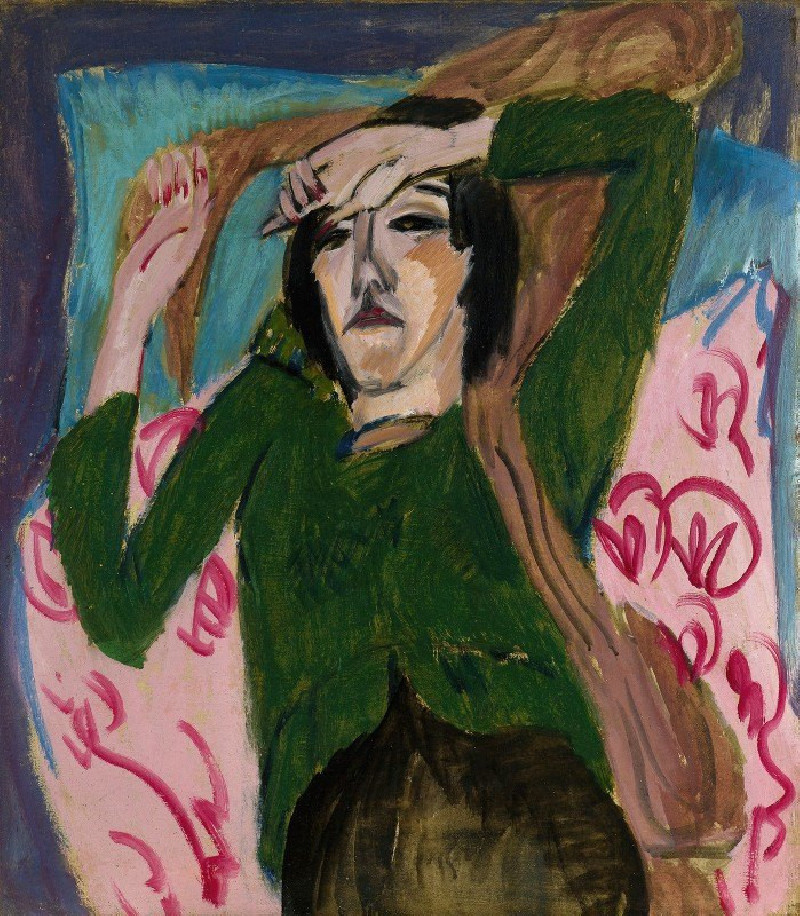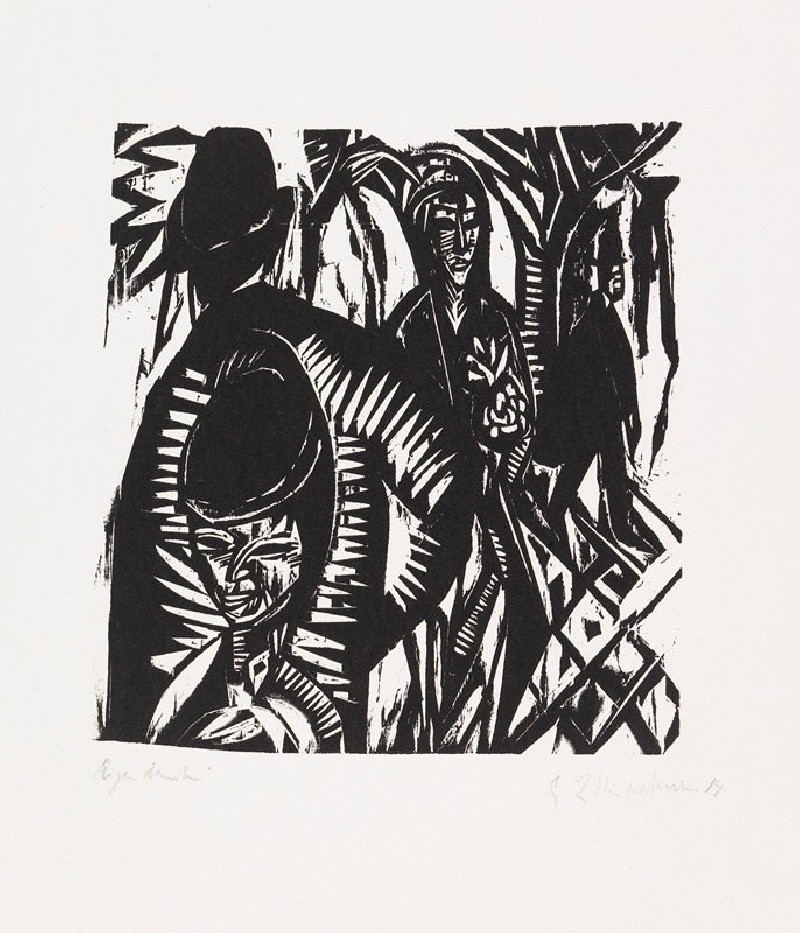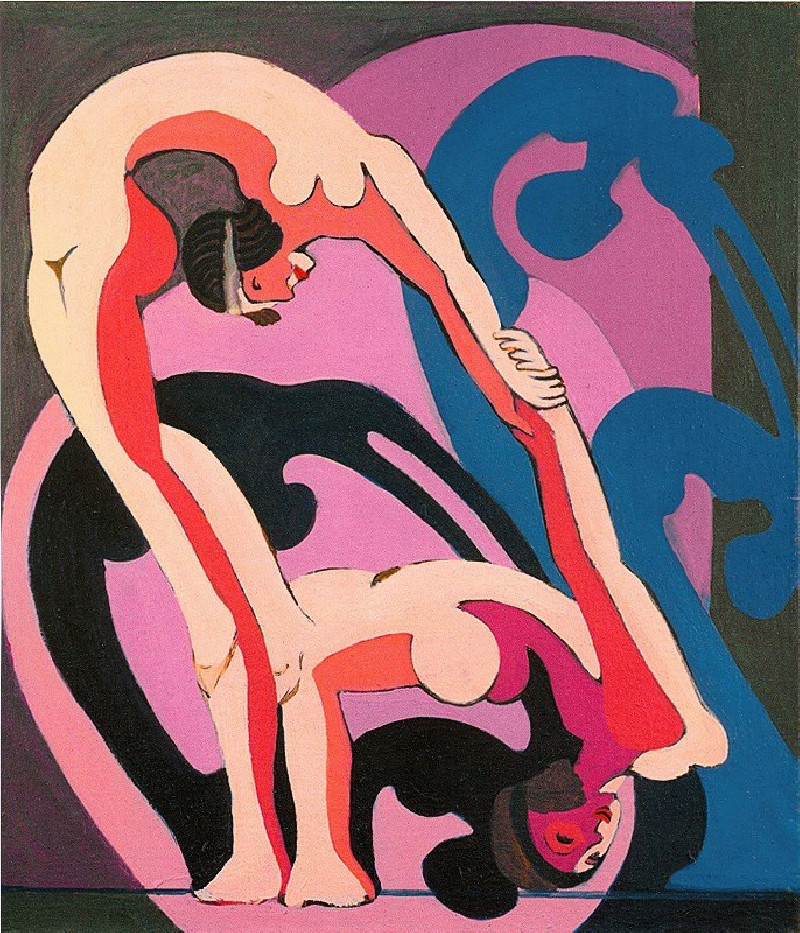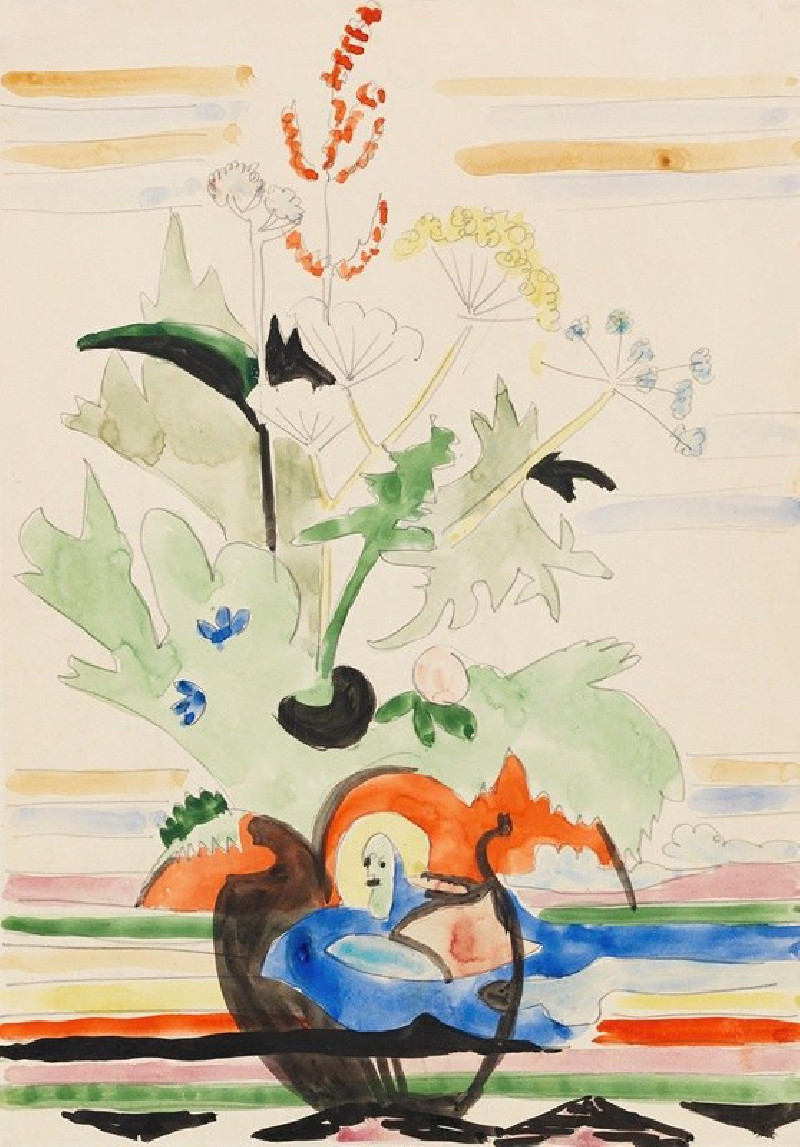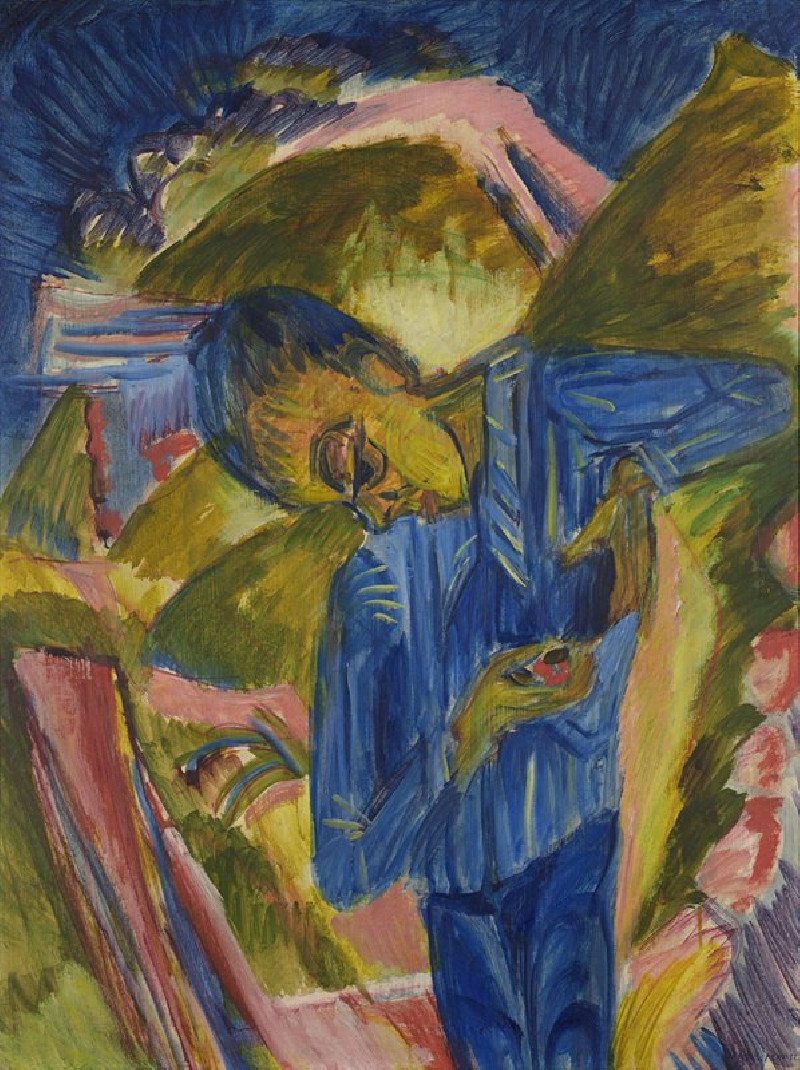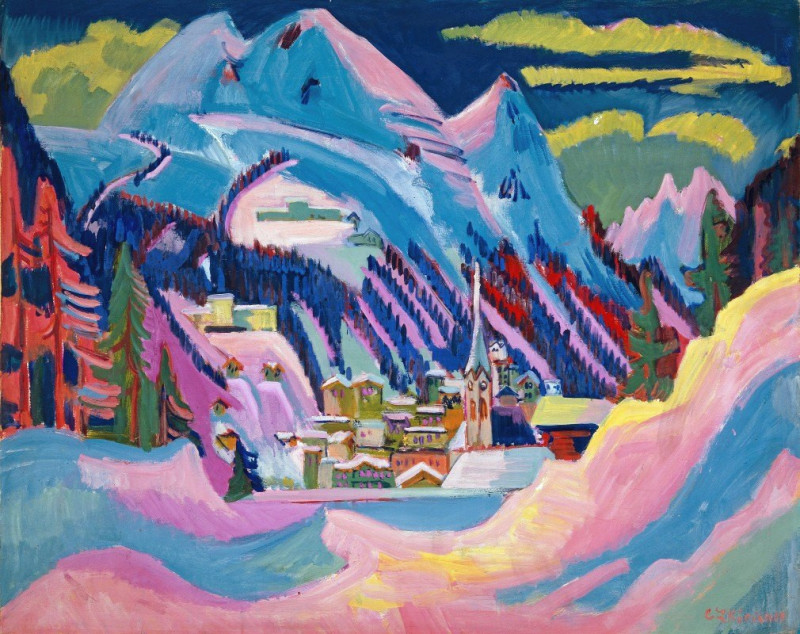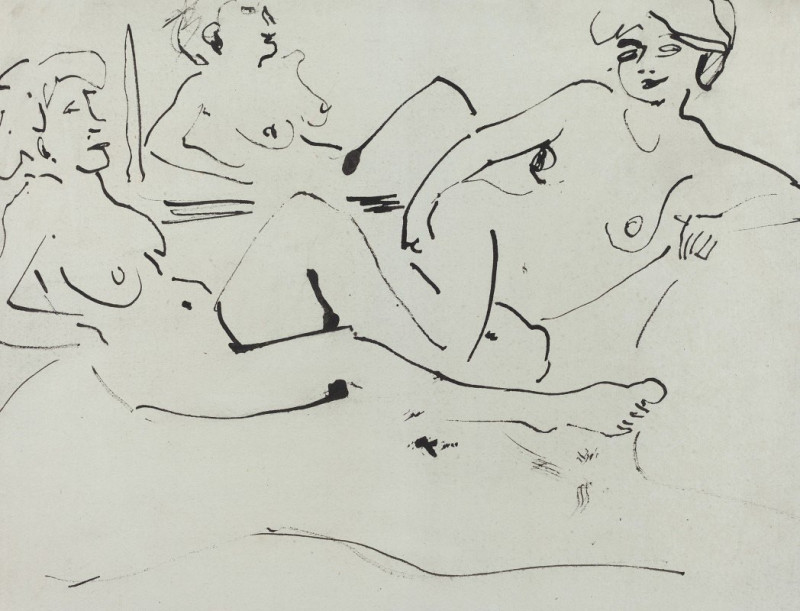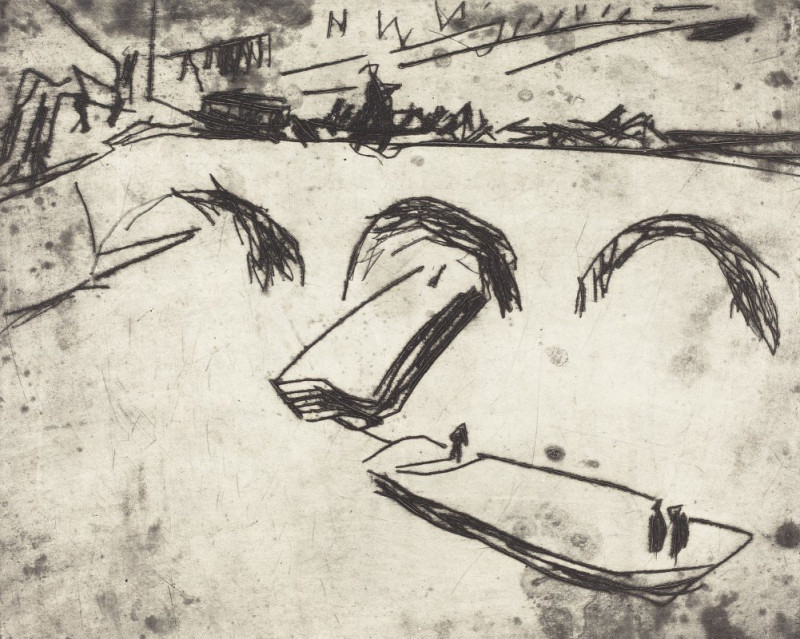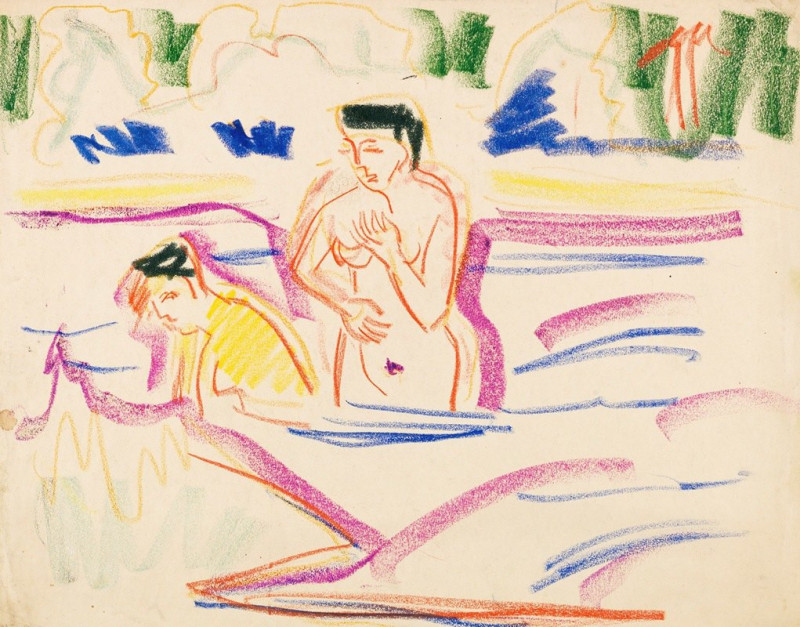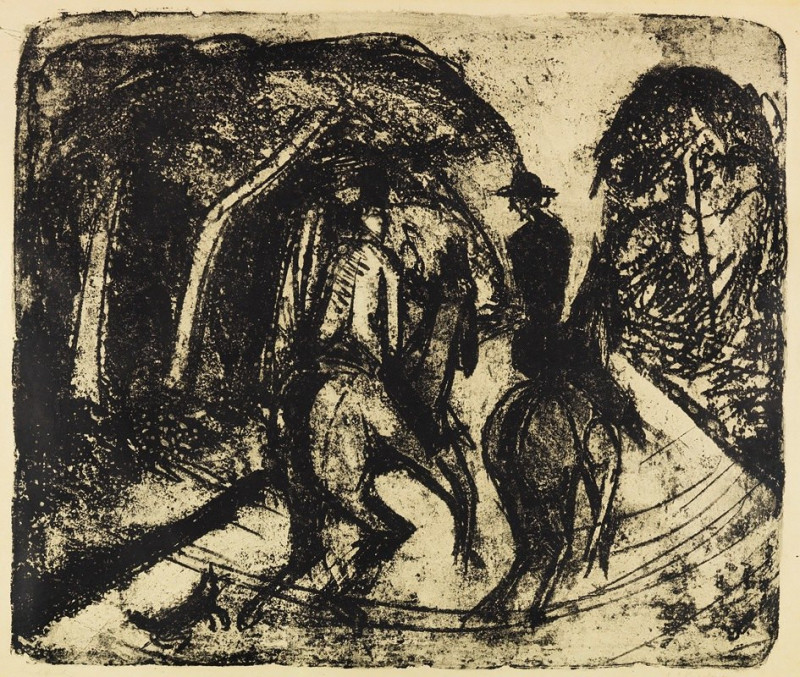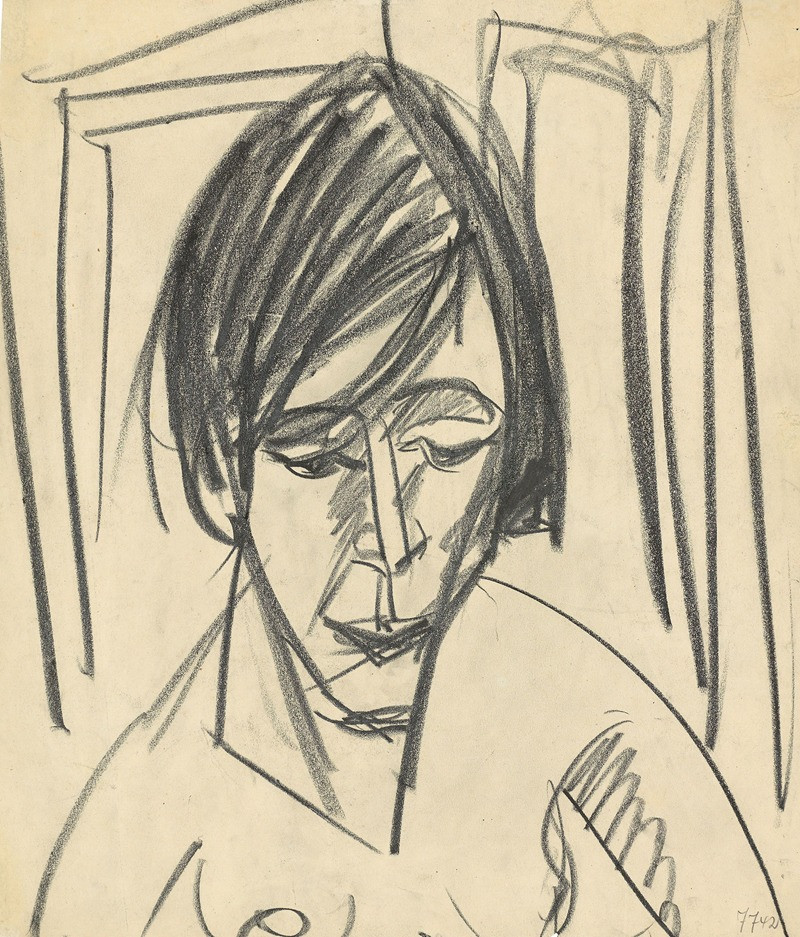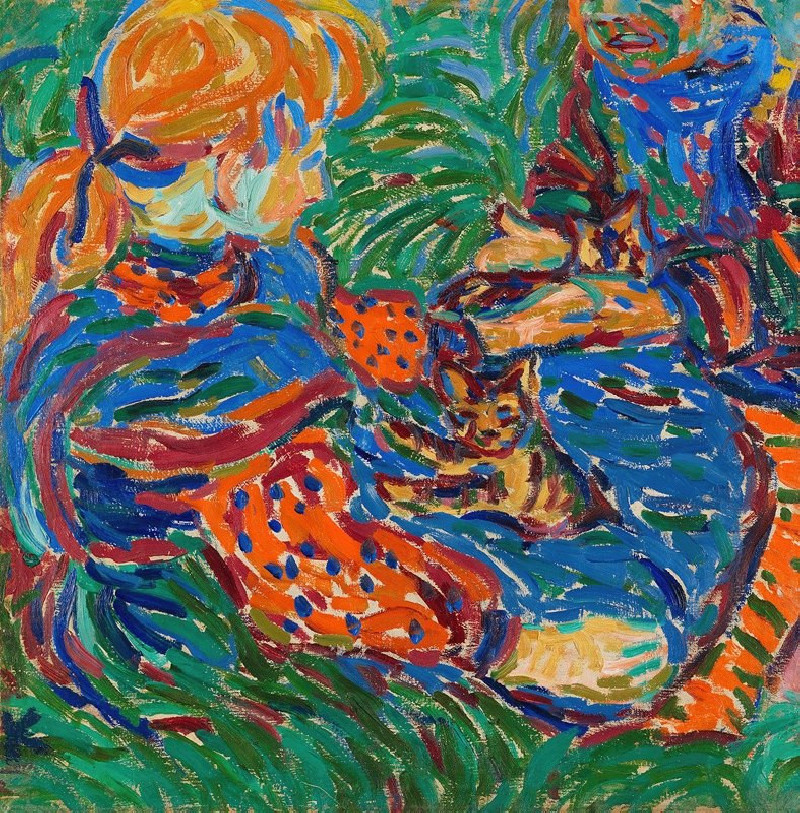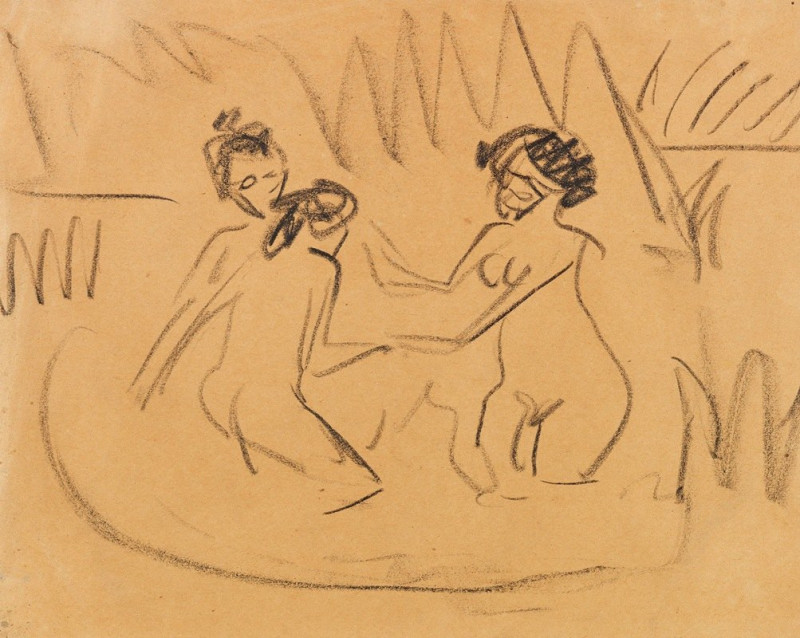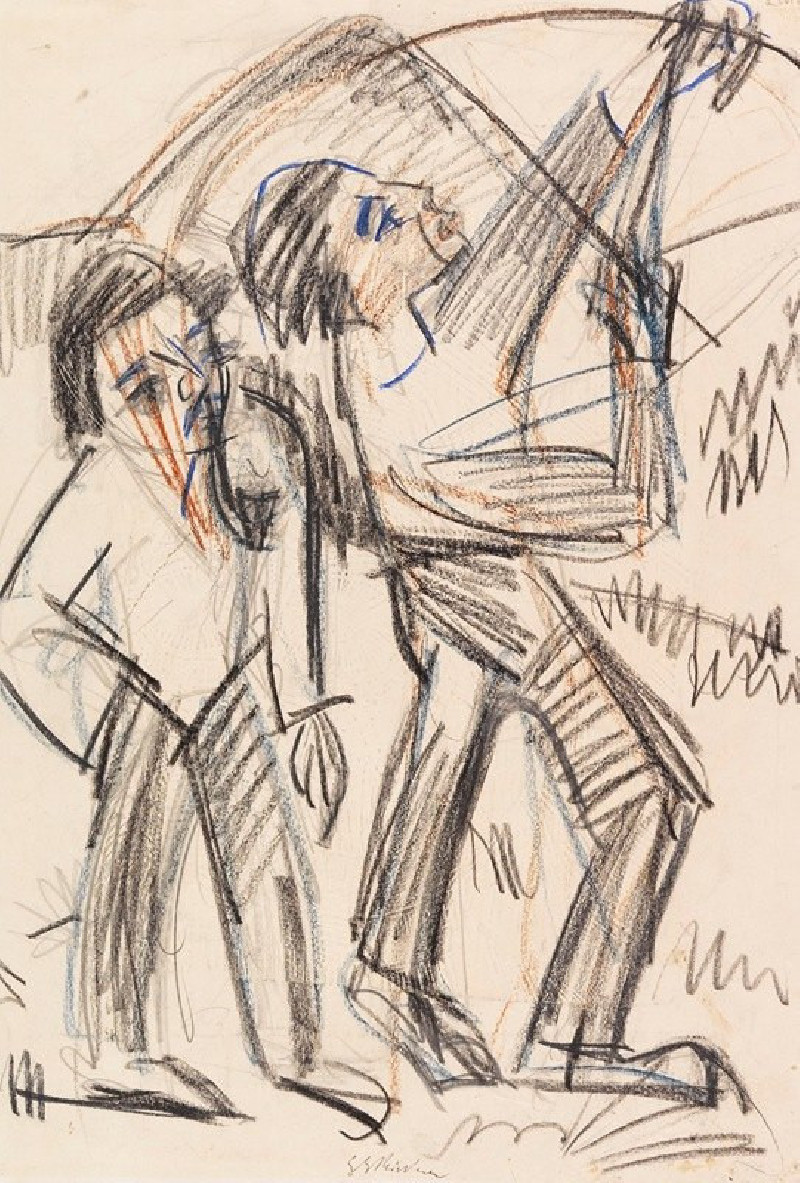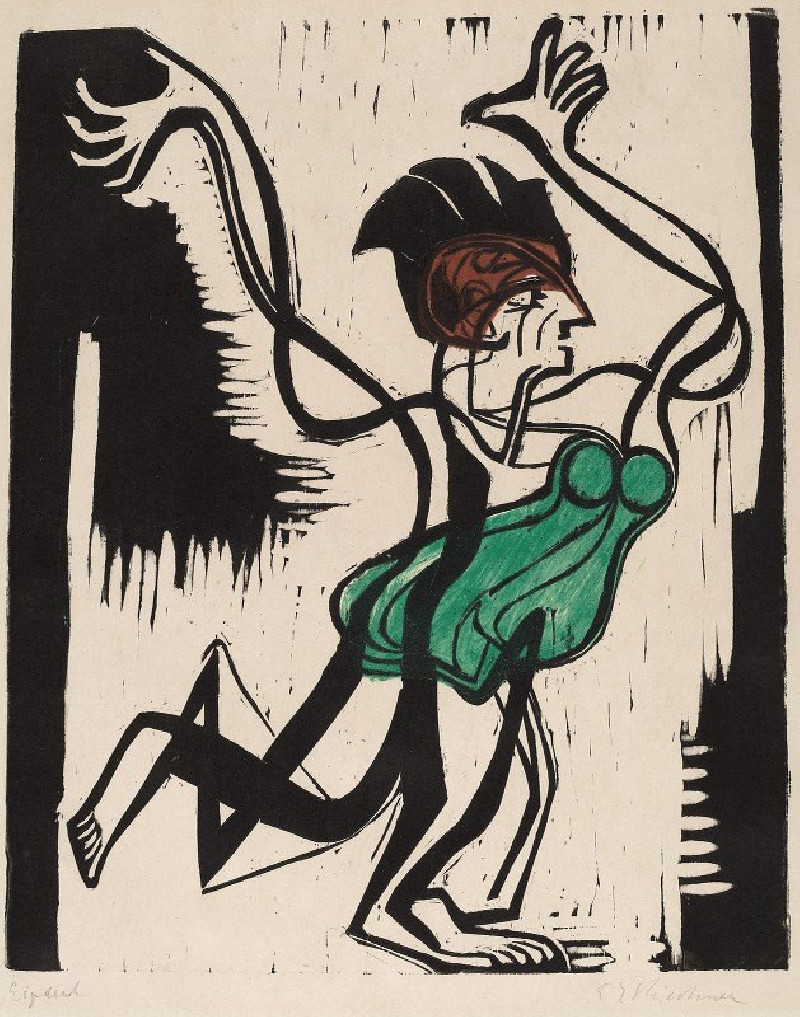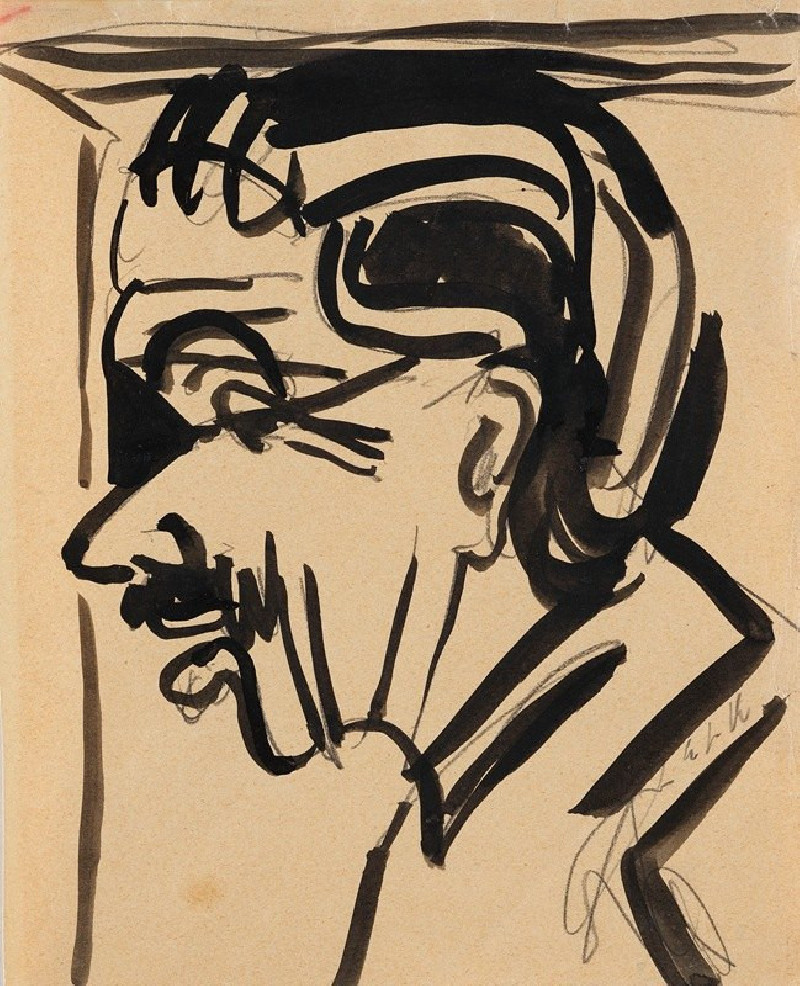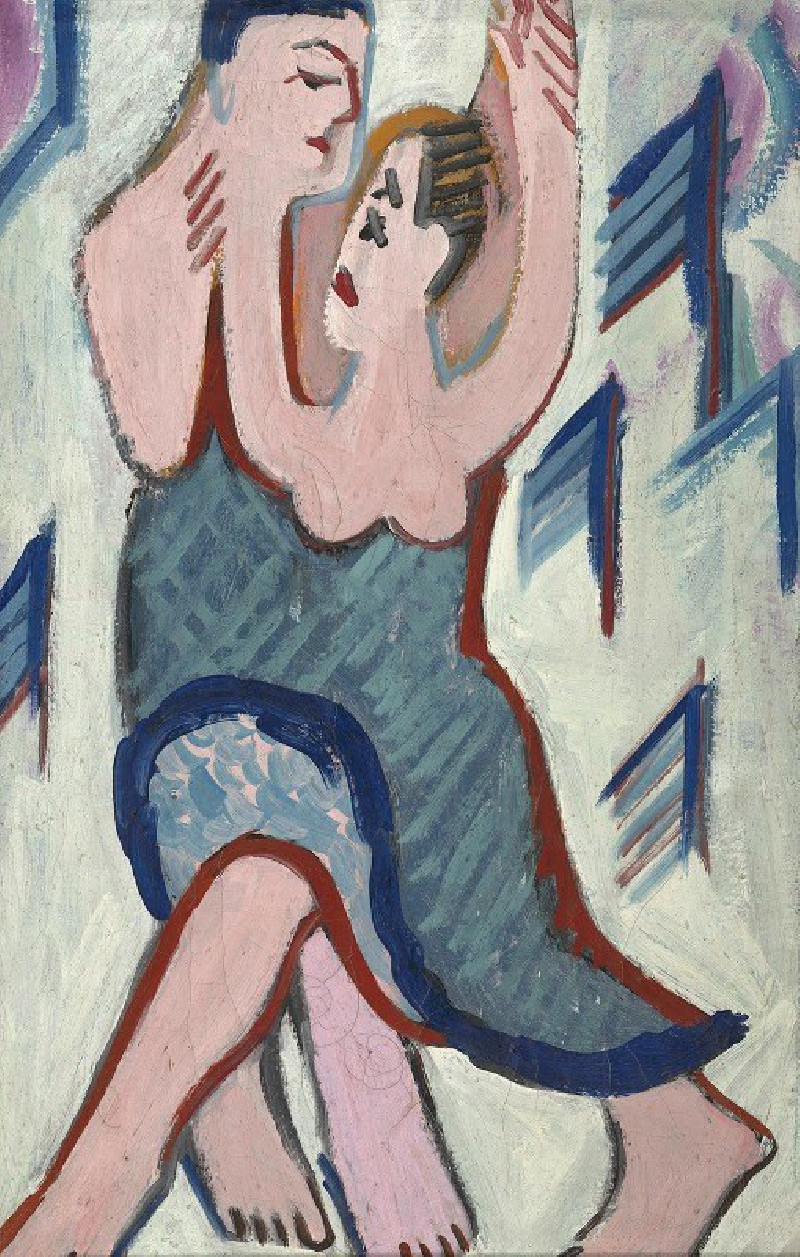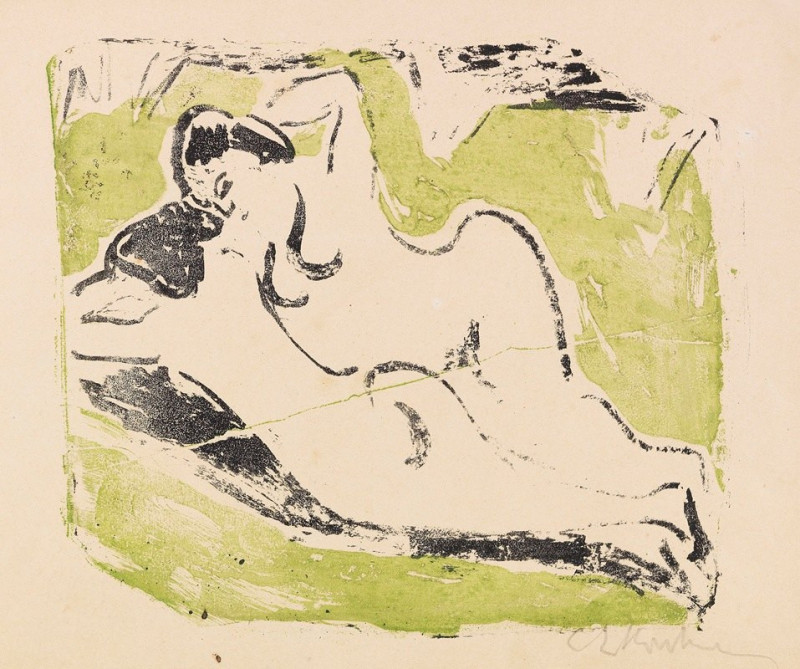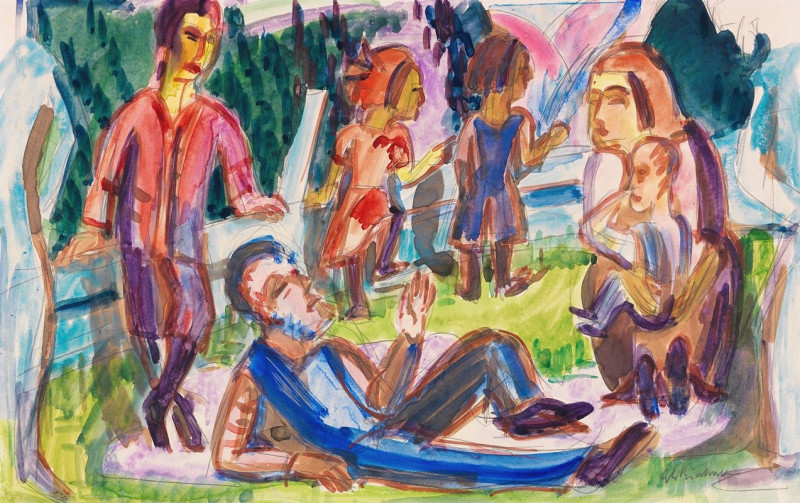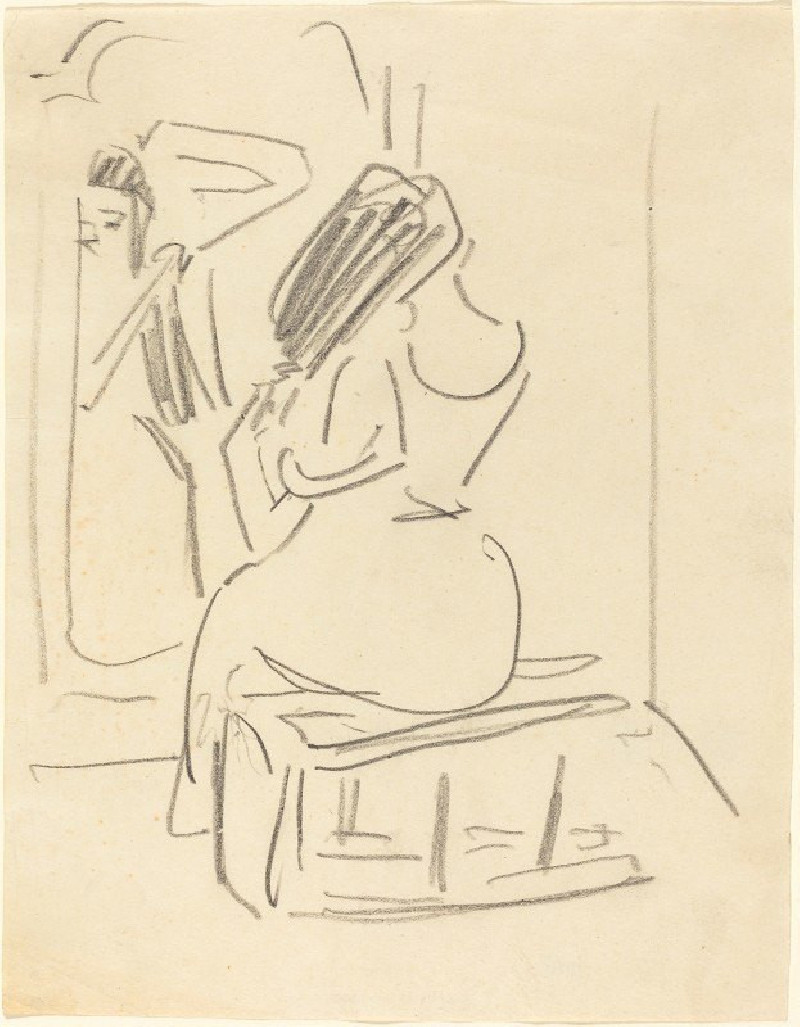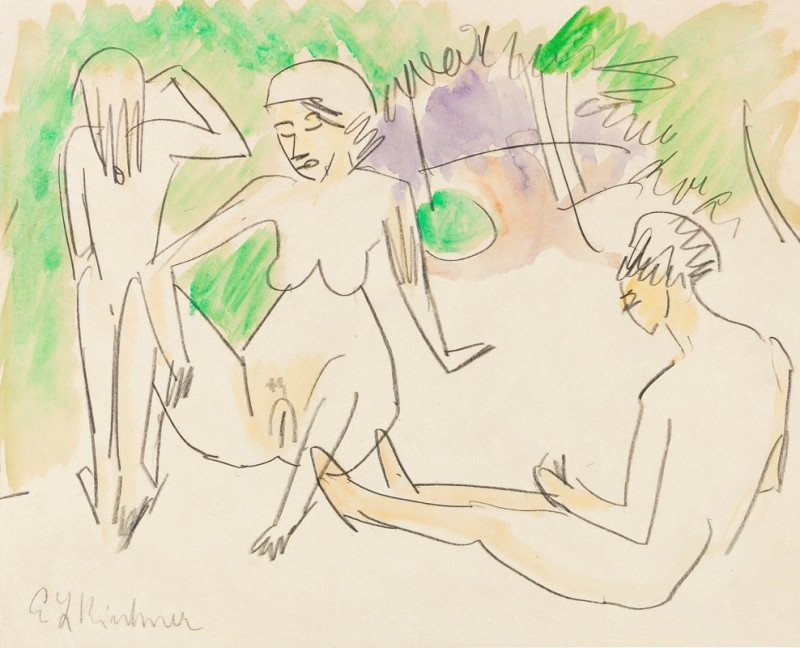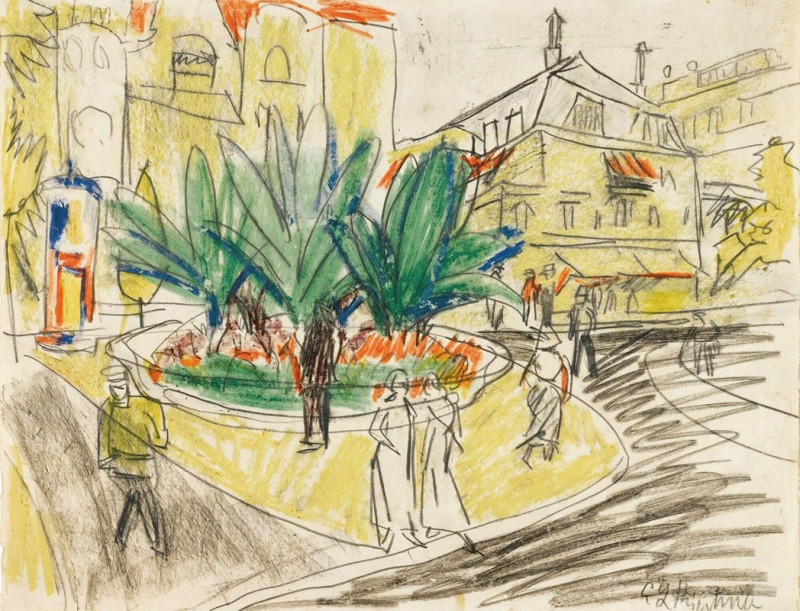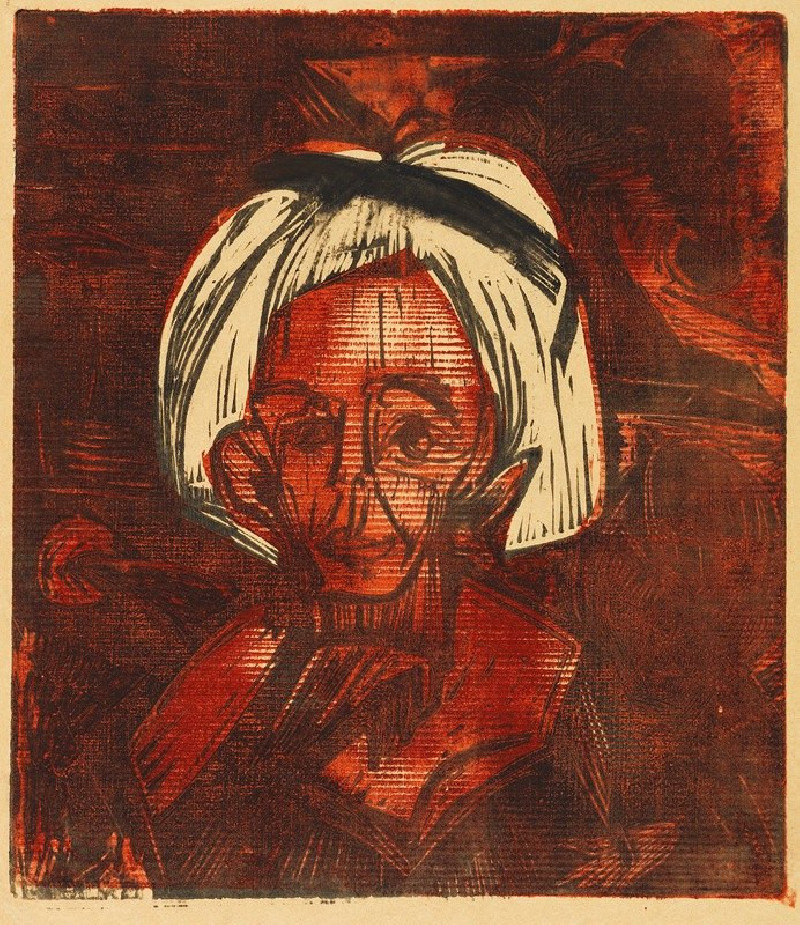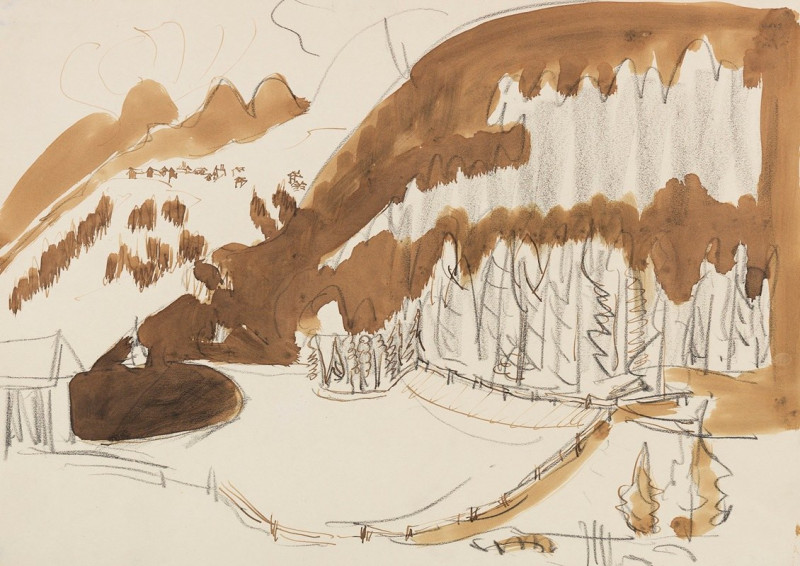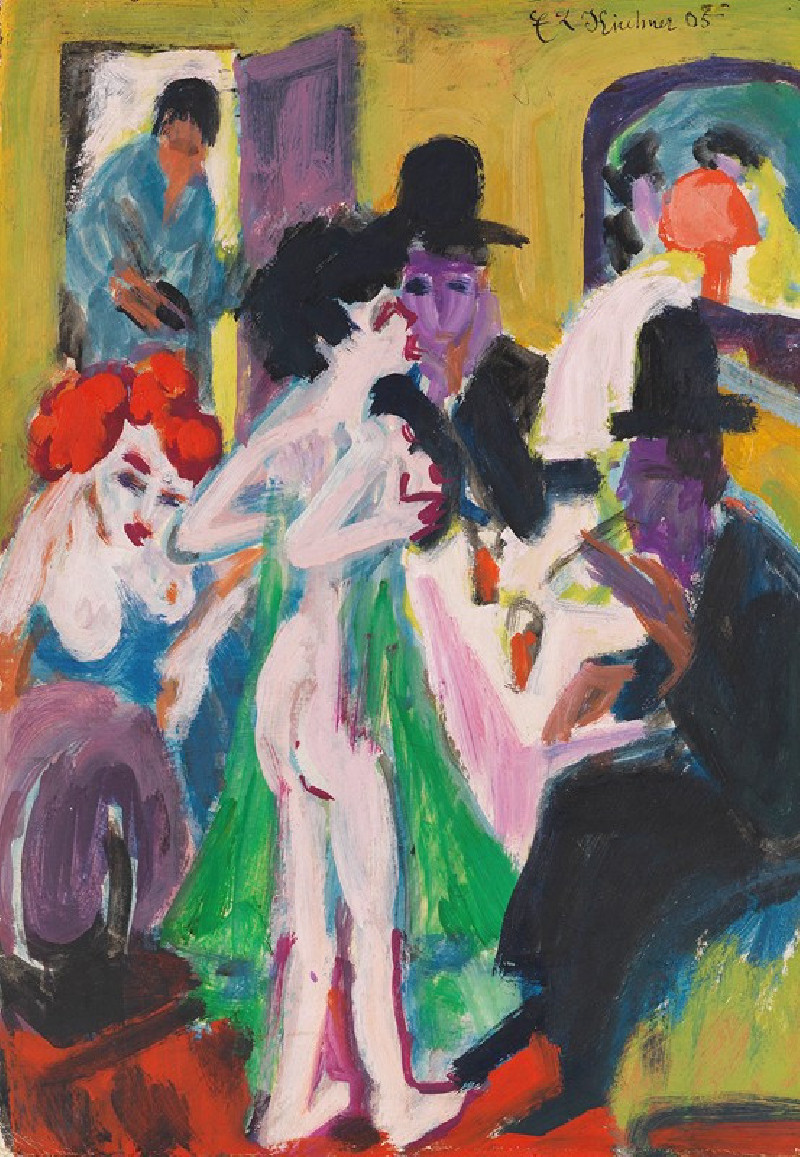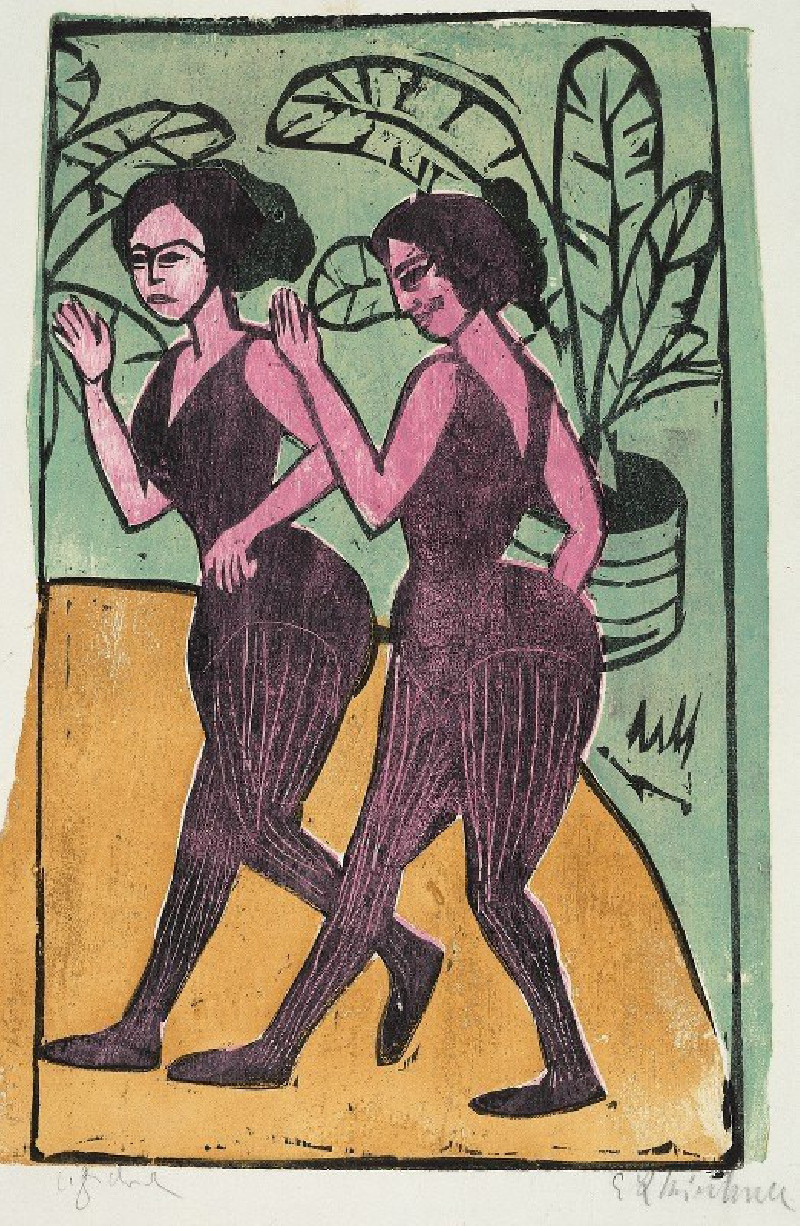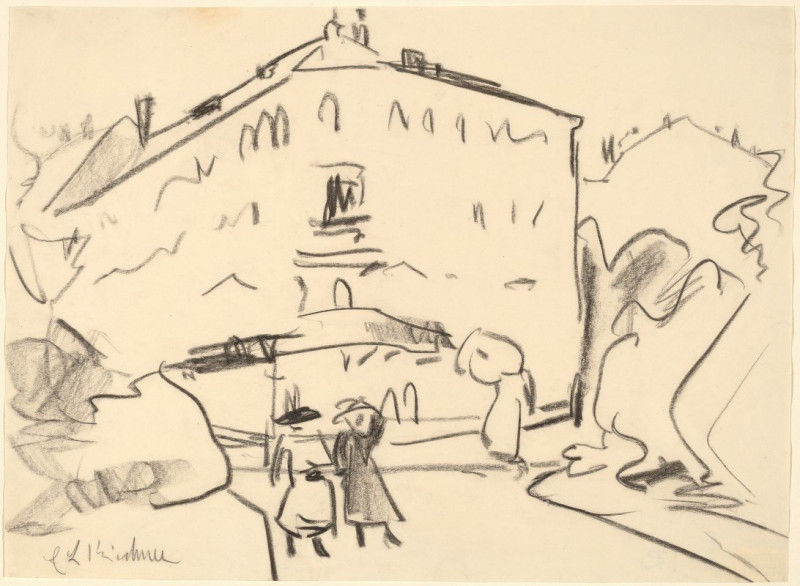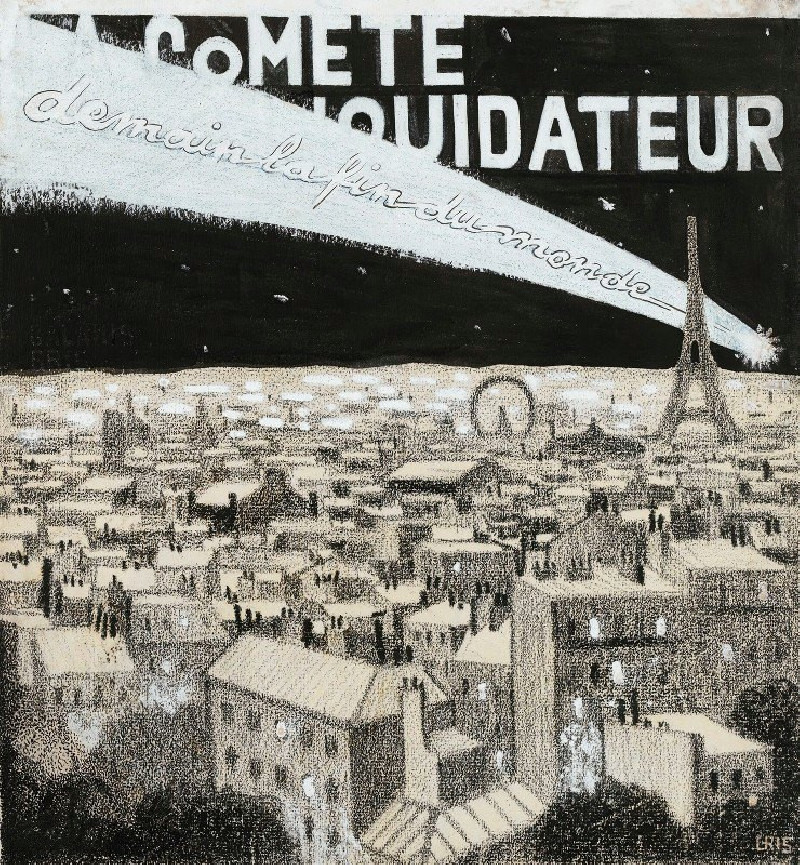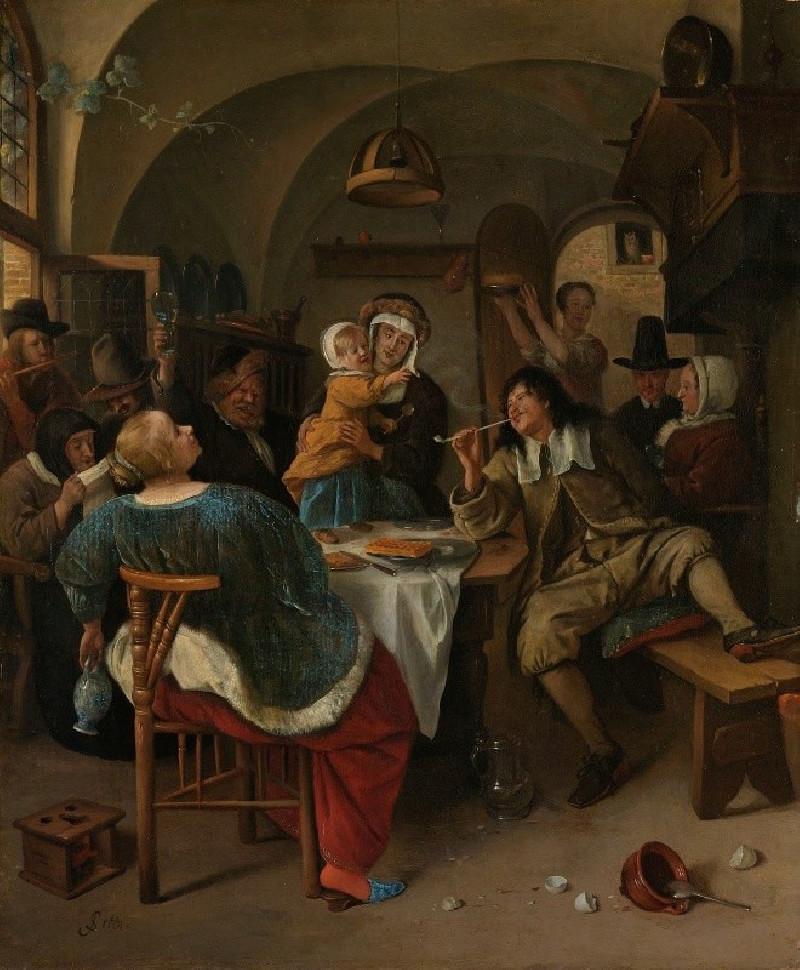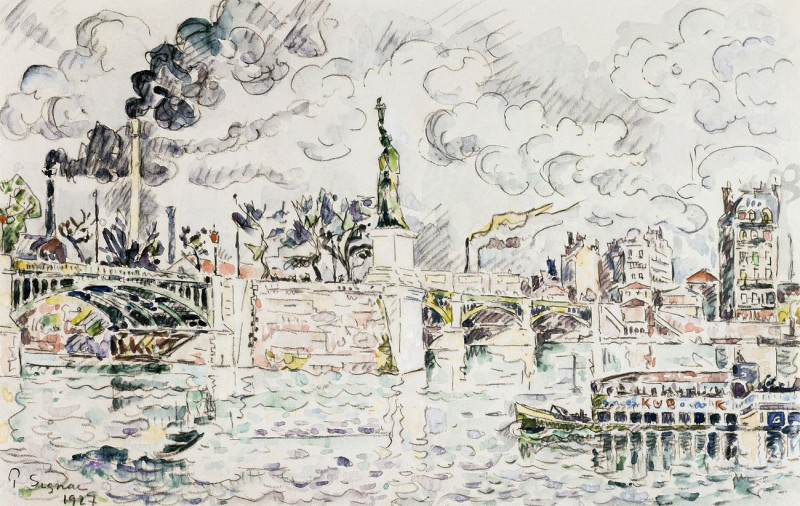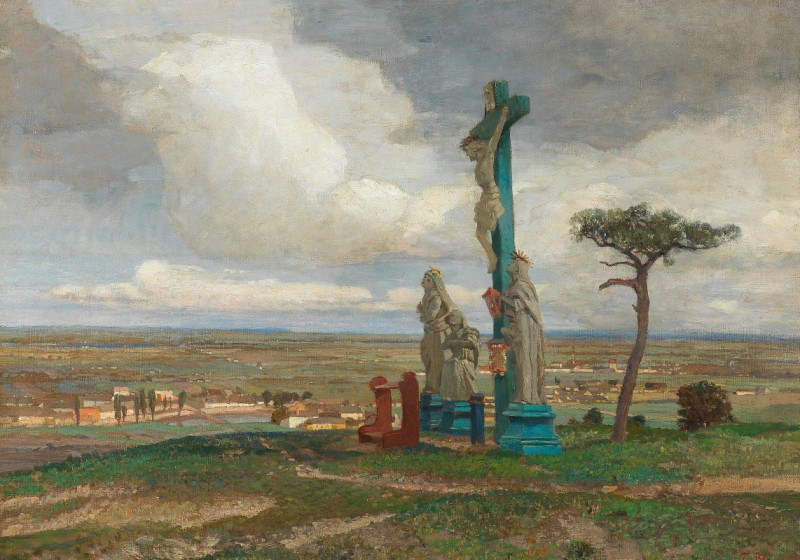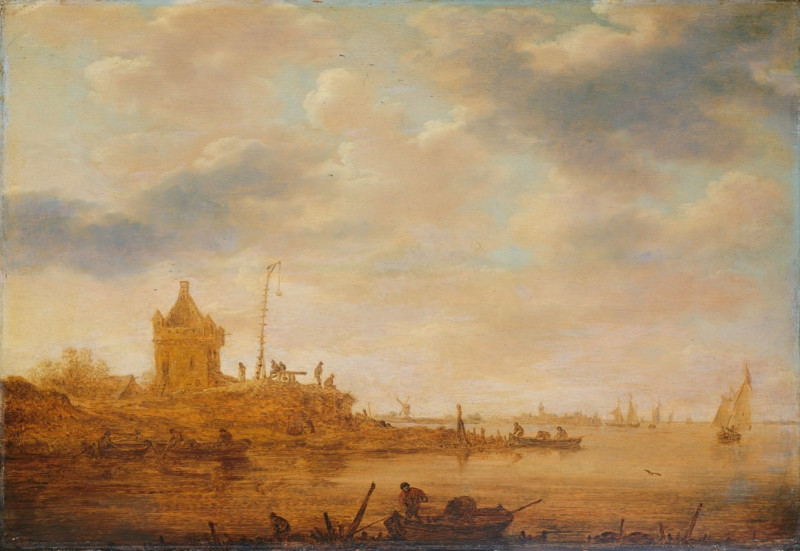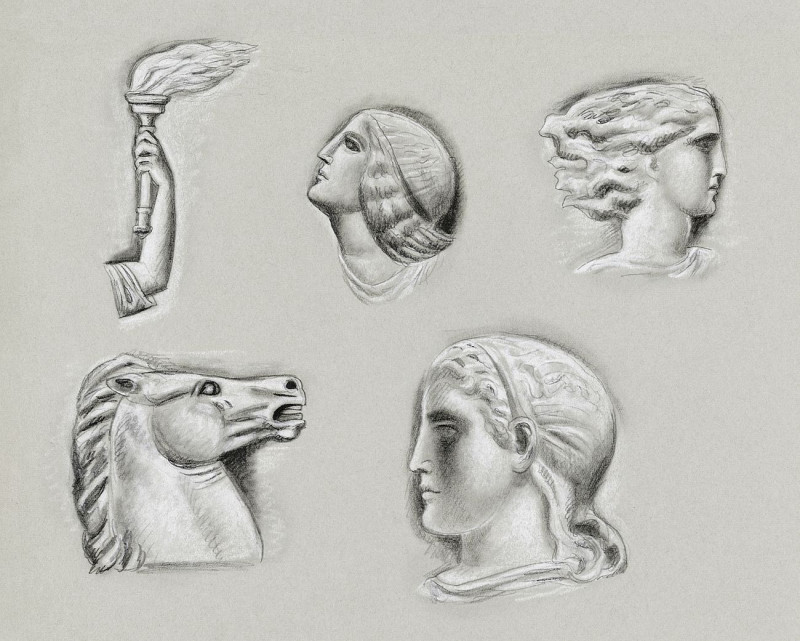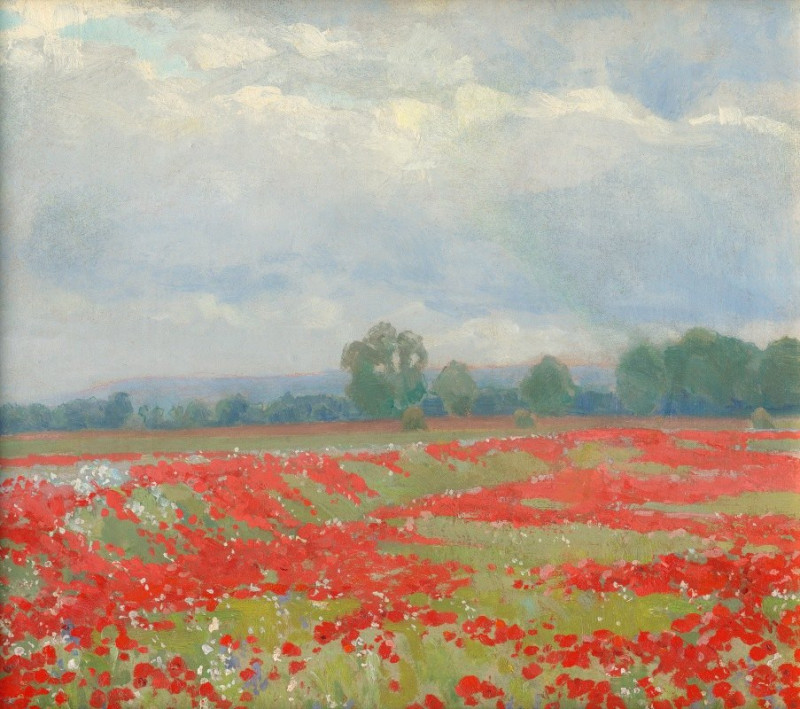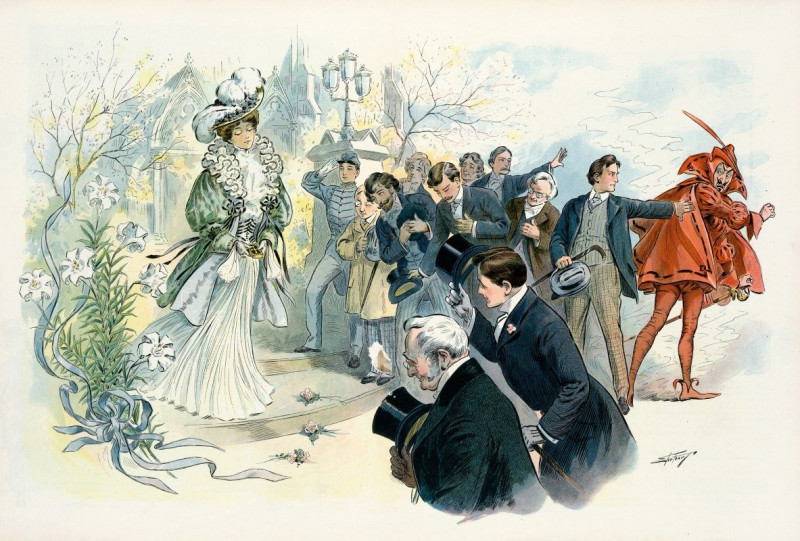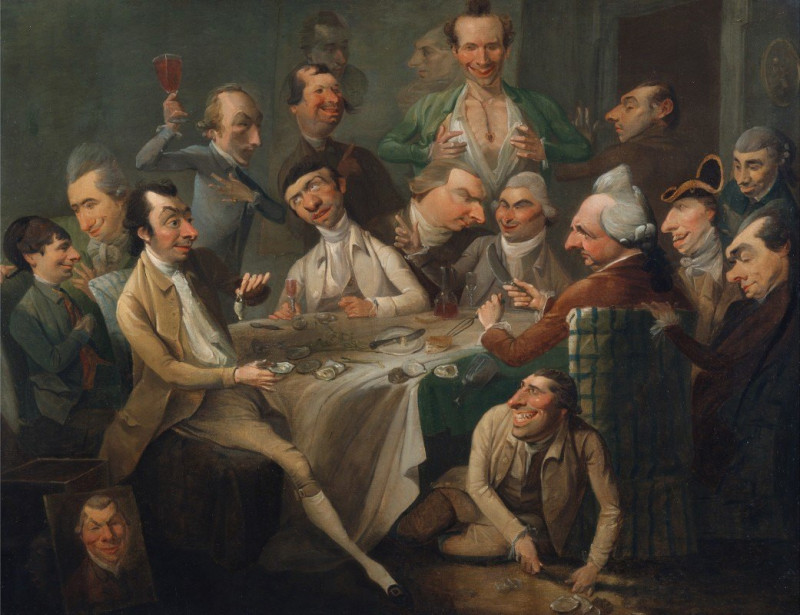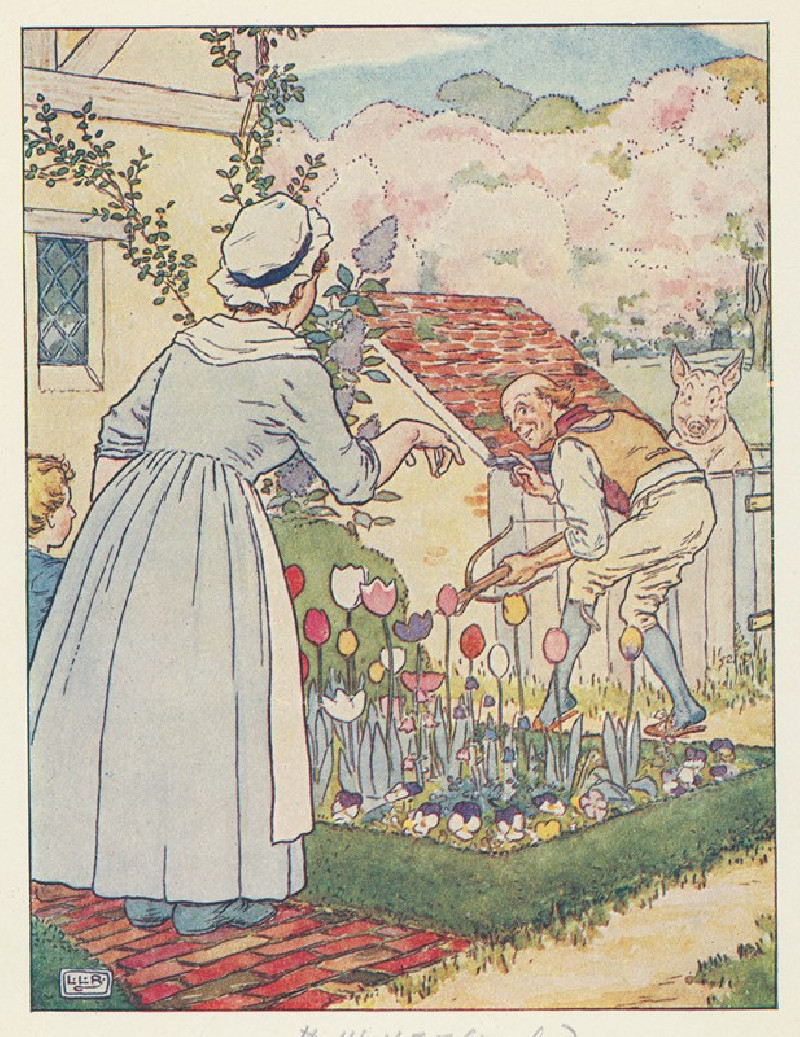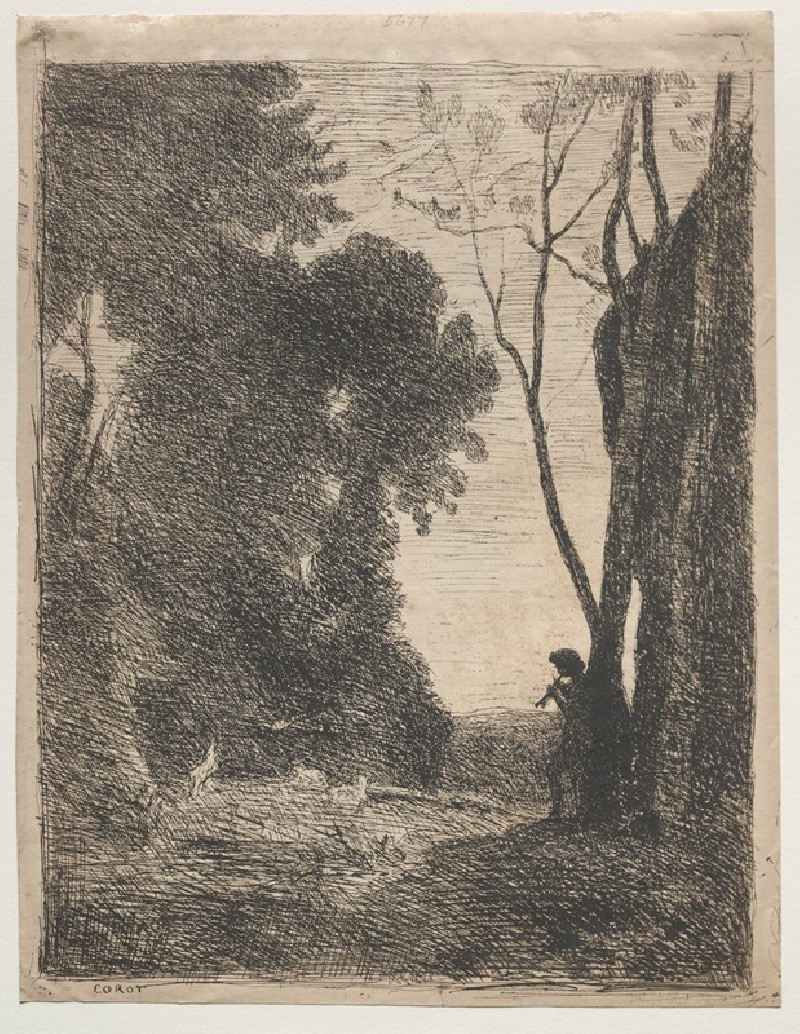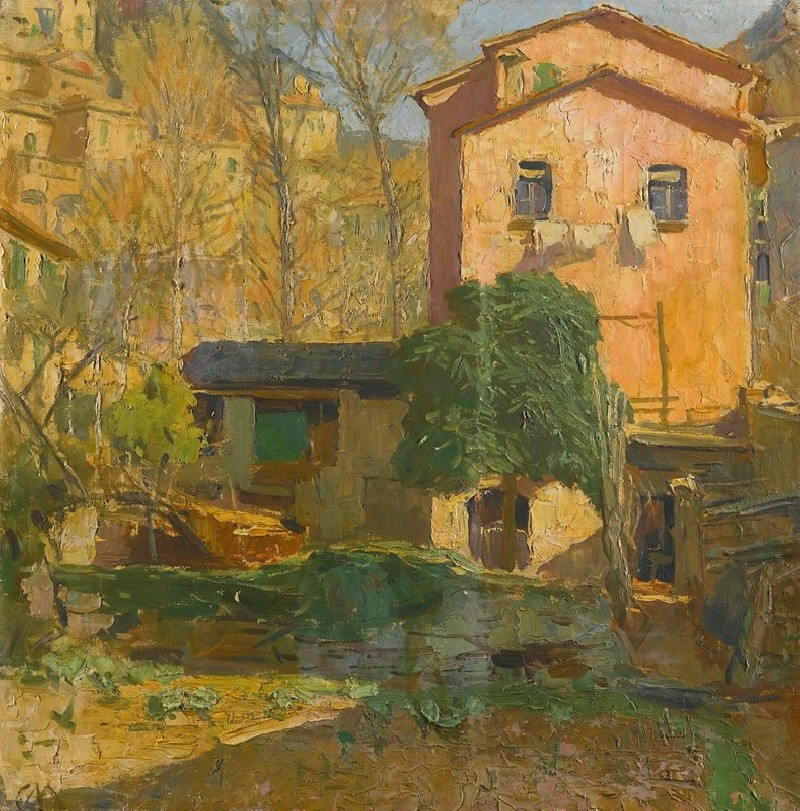Knabe mit Katze (1920)
Technique: Giclée quality print
Recommended by our customers
More about this artwork
Ernst Ludwig Kirchner, a master of German Expressionism, presents a captivating ink-on-paper work entitled "Knabe mit Katze" (Boy with Cat) from 1920. This compelling piece captures the tender and intimate moment between a young boy and a cat, rendered in Kirchner’s distinctive, emotive style.The artwork is characterized by its dramatic use of dark ink and stark contrasts, which intensifies the emotional depth of the scene. The composition focuses on the boy, whose face is tilted downwards towards the cat with an expression of serene affection and gentle curiosity. The cat, comfortably nestled in the boy's arms, seems to reciprocate this bond, suggesting a mutual trust and companionship.Kirchner's use of rough, textured lines and the almost claustrophobic proximity of the subjects evoke a sense of immediacy and urgency, typical of Expressionist works. The background remains abstract and undefined, directing all attention to the interaction between the boy and the cat."Knabe mit Katze" not only reflects Kirchner's innovative techniques but also conveys a profound sense of empathy and connection between human and animal.
Delivery
Returns
Ernst Ludwig Kirchner (1880–1938) was one of the most important German Expressionist painters. He was a co-founder of Die Brücke, a group of German expressionist artists formed in Dresden in 1905. Die Brücke and Kirchner took inspiration from Vincent Van Gogh and Edvard Munch, as well as African and Oceanic art. They used woodblock printing as a medium to showcase their signature style: flat, unrealistic images with vivid colors. The recurring themes in Kirchner's artworks included exotic cultures, faraway landscapes, self-portraits, dancers and Berlin street life. His paintings and prints effectively portrayed non-European cultures despite the fact that he never traveled outside of Europe.

